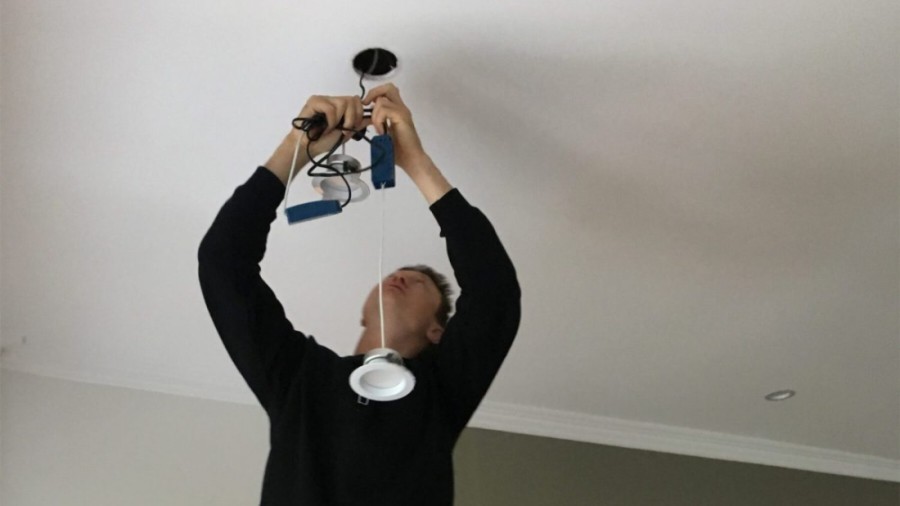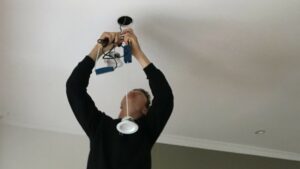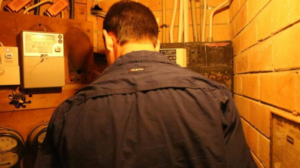Installing a chandelier or pendant light is a fantastic way to elevate the aesthetic of your home, whether you’re revamping a dining room, creating a stunning feature in your hallway, or adding a touch of elegance to a living space. These lighting fixtures offer not just illumination but also style, transforming a room into something special. However, installing a chandelier or pendant light requires more than just choosing a beautiful fixture, it involves understanding various aspects like electrical safety, design compatibility, and installation specifics.
If you’re thinking of upgrading your home lighting with a chandelier or pendant light, here’s what you need to know before getting started.
1. Choose the Right Size and Style
The size and style of your chandelier or pendant light should be appropriate for the space it’s going to illuminate. You don’t want a massive chandelier that overwhelms a small room, nor a tiny pendant light that’s lost in a large space.
- Room Size and Ceiling Height: As a general guideline, the diameter of a chandelier should be roughly one-half to two-thirds the width of the room. For pendant lights, the drop (length of the cord or chain) should depend on the height of the ceiling. A standard rule is to leave about 2.1 metres between the bottom of the fixture and the floor. For higher ceilings, you can increase the drop to create a more dramatic effect.
- Room Function: A dining room chandelier should provide enough light for the entire table, while a pendant light over a kitchen island needs to offer targeted illumination without being too overpowering. Think about the purpose of the lighting—ambient, task, or accent—and choose accordingly.
- Aesthetic: Consider how the light fixture complements your décor. Are you going for a modern, minimalist look or a more traditional, opulent design? Your chandelier or pendant light should align with the style of the room and provide a cohesive visual effect.
2. Electrical Requirements and Safety
Installing a chandelier or pendant light involves handling electrical components, which should only be done by a qualified electrician. Sparky Nearby, with years of experience installing large pendant lights and chandeliers, recommends you never attempt to install a lighting fixture without professional help, especially for more complex installations. Here’s why:
- Circuit Compatibility: Before installation, it’s essential to check whether the circuit can handle the additional load of a chandelier or pendant light. Larger fixtures often require more power, and your circuit may need to be upgraded to ensure it’s safe.
- Proper Wiring: Installing chandeliers and pendant lights often requires running new wiring, particularly if the light is being installed in a location that previously didn’t have one. Incorrect wiring can lead to serious safety hazards, including electrical fires.
- Mounting and Weight Considerations: Chandeliers and large pendant lights can be heavy, and their weight needs to be properly supported. Your electrician will need to ensure that the ceiling fixture box is secure and rated to handle the weight of the chandelier or pendant light. Using the wrong type of mounting bracket or fixture box could cause the light to fall or become unstable.
Our experienced and licensed electricians in Earlwood, Bardwell Park and Hurstville can help you navigate the electrical requirements and ensure your chandelier or pendant light is installed safely.
3. Location
Where you place your chandelier or pendant light can significantly affect its effectiveness and style. Here are some placement tips to ensure the best possible results:
- Dining Room: In a dining room, a chandelier should hang directly over the centre of the table. It should be high enough to provide adequate light without obstructing sightlines between guests. Aim for about 75–90 cm above the table.
- Kitchen: Pendant lights are commonly used over kitchen islands, sinks, and breakfast bars. The lights should be spaced evenly, with at least 45 cm between each light to avoid creating shadows or hotspots. For taller ceilings, you can opt for longer pendant light drops.
- Entryway or Hallway: In an entryway or hallway, a chandelier can add an elegant focal point, but make sure it doesn’t block the flow of traffic. The height of the chandelier or pendant light should be adjusted to prevent people from bumping into it.
- Living Rooms and Bedrooms: If you’re installing a chandelier or pendant light in a living room or bedroom, ensure it’s positioned in a way that it provides sufficient lighting without creating glare or shadows. For pendant lights, consider grouping them in clusters for a stylish and functional effect.
4. Power Source and Switch Placement
One of the most crucial elements of any lighting installation is the power source. Chandeliers and pendant lights often require dedicated power circuits. In addition, the positioning of light switches can have a significant impact on ease of use.
- Switch Placement: Ideally, you’ll want to be able to control your chandelier or pendant light from a location that’s easy to reach, typically near the entry to the room. Consider if you need additional wall switches or even dimmer switches to adjust the light intensity.
- Smart Lighting: If you’re looking to upgrade your home lighting further, consider installing smart bulbs or switches that allow you to control your chandelier or pendant light remotely or through voice commands. This is particularly useful in high-ceilinged rooms where you may not want to physically adjust the fixture’s brightness.
5. Consider Maintenance and Cleaning
Chandeliers and pendant lights, especially those with many crystals, intricate metalwork, or glass elements, require regular cleaning to maintain their appearance and functionality. Dust and grime can accumulate on the surfaces, dimming the light they emit.
- Cleaning Frequency: For optimal light output, you should clean your chandelier or pendant light every few months, especially if it’s in a high-traffic area or exposed to smoke and humidity (e.g., near the kitchen).
- Cleaning Tools: Use a soft cloth, a ladder, and possibly a light cleaning solution to gently wipe down the light fixture. Always ensure the light is switched off and cooled before cleaning to avoid electrical shock or injury.
6. Professional Installation
While DIY enthusiasts may be tempted to install their own lighting fixtures, when it comes to large and complex chandeliers and pendant lights, hiring a qualified electrician is always the safer and more effective choice. Sparky Nearby’s team is skilled in handling installations for even the most intricate and heavy lighting fixtures. Whether it’s mounting a delicate crystal chandelier or suspending a large pendant light, you can trust our professionals to get the job done correctly, safely, and efficiently.
For residents seeking electricians in Wolli Creek, Brighton-le-Sands, Bardwell Park, Eastlakes, Pagewood, Rosebery, or Ramsgate, our expert team is ready to assist with all your chandelier and pendant light installation needs, ensuring safety and precision every step of the way.
Conclusion
Installing a chandelier or pendant light can drastically improve the look and feel of your home. However, there are many factors to consider before making this upgrade—from choosing the right size and style to ensuring the electrical setup is safe and reliable. By carefully planning your installation and working with a trusted electrician, you can avoid potential pitfalls and enjoy the beauty and functionality of your new lighting fixture for years to come.For expert lighting installation services, contact us today. With extensive experience in installing chandeliers and pendant lights, our team is committed to ensuring that your lighting needs are met with precision and care.









